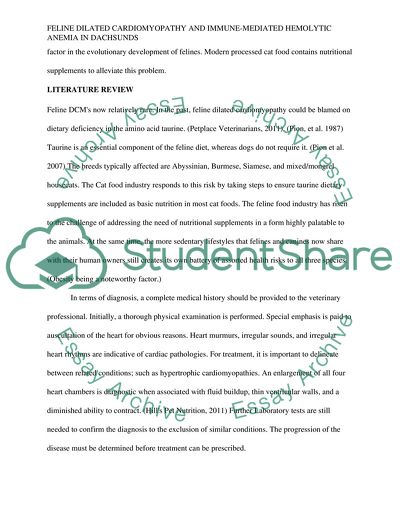Cite this document
(“Cat Dilated Cardiomyopathy and Immune Mediated Hemolytic Anemia in Research Paper”, n.d.)
Cat Dilated Cardiomyopathy and Immune Mediated Hemolytic Anemia in Research Paper. Retrieved from https://studentshare.org/medical-science/1761623-1dilated-cardiomyopathy-in-cat-immune-mediated-hemolytic-anemia-daschund
Cat Dilated Cardiomyopathy and Immune Mediated Hemolytic Anemia in Research Paper. Retrieved from https://studentshare.org/medical-science/1761623-1dilated-cardiomyopathy-in-cat-immune-mediated-hemolytic-anemia-daschund
(Cat Dilated Cardiomyopathy and Immune Mediated Hemolytic Anemia in Research Paper)
Cat Dilated Cardiomyopathy and Immune Mediated Hemolytic Anemia in Research Paper. https://studentshare.org/medical-science/1761623-1dilated-cardiomyopathy-in-cat-immune-mediated-hemolytic-anemia-daschund.
Cat Dilated Cardiomyopathy and Immune Mediated Hemolytic Anemia in Research Paper. https://studentshare.org/medical-science/1761623-1dilated-cardiomyopathy-in-cat-immune-mediated-hemolytic-anemia-daschund.
“Cat Dilated Cardiomyopathy and Immune Mediated Hemolytic Anemia in Research Paper”, n.d. https://studentshare.org/medical-science/1761623-1dilated-cardiomyopathy-in-cat-immune-mediated-hemolytic-anemia-daschund.


